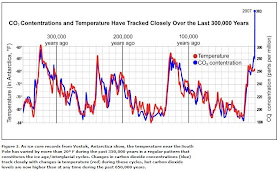Nice figure from: https://wattsupwiththat.com/2014/07/16/latest-noaa-mean-sea-level-trend-data-through-2013-confirms-lack-of-sea-level-rise-acceleration-2/

Click the chart above for a larger view
20170427 Update. The rate has now fallen to 1.94 mm/yr. Note that the rate has changed little since 1850, despite the carbon dioxide increases caused by the Industrial Revolution.
There is nothing like good old-fashioned data for cooling some of the current hysteria associated with global warming. The chart above shows the variations in annual mean sea level obtained from the tidal gauge at San Francisco, the oldest record in the Western Hemisphere. In earth science we associate rises in sea level with increases in global temperature and the melting of glaciers. For example, at the height of the last glaciation 22,000 years ago, the ocean was 120 meters (390 feet) lower than at present. It has been mostly rising ever since. After the end of the “Little Ice Age,” which occured 600 years ago, sea level rise at SF (and NY) continued at the measured pace of 2 mm/yr—about 8 inches per century, certainly not the tens of feet predicted by alarmists. The human-caused release of greenhouse gases, however, has been exponential over that period. One wonders why the rise in sea level isn’t better correlated with the rise in CO2. The chart represents real data, not a model predicting certain doom and gloom. The leaders of our Industrial Revolution have made a mess of the environment while lining their own pockets. There are an infinite number of reasons to have them clean it up, but the increase in CO2 doesn’t appear to be one of them.
Reference:
NOAA, 2004, Recording the tides in San Francisco Bay, National Oceanic and Atmospheric Administration [This is a great little download explaining how these data were gathered. Note that the really big spikes in the data are from El Nino events when warm (expanded) ocean water arrives at SF from the tropics.] (http://oceanservice.noaa.gov/topics/navops/ports/san_francisco_tide_gauge.pdf), 50 p.
Update 20121212:
Ref:
From Figure 2 of Bromirski, P.D., Miller, A.J., and Flick, R.E., 2012, Understanding North Pacific sea level trends: EOS, v. 93, no. 27, p. 249-250.
Update 20130805:
Just found this figure at:
http://www.southwestclimatechange.org/climate/global/past-present
It nicely shows the dependence of atmospheric carbon dioxide concentration on temperature at the south pole. This is mostly an effect based on the fact that warm ocean water emits carbon dioxide, while cold water absorbs it. Of course, the cause (temperature increase) precedes the effect (carbon dioxide increase), sometimes by over a thousand years. Note the huge increase in carbon dioxide due to the Industrial Revolution unaccompanied by a correspondingly huge increase in temperature.
Update 20140527:
An excellent 1.5 hour talk by Dr. Easterbrook showing the data pertinent to climate change:
http://www.youtube.com/watch?v=4LkMweOVOOI
Nice figure from: https://wattsupwiththat.com/2014/07/16/latest-noaa-mean-sea-level-trend-data-through-2013-confirms-lack-of-sea-level-rise-acceleration-2/
Nice update 20180808 by Charles Tips:
https://go.glennborchardt.com/climatetips







